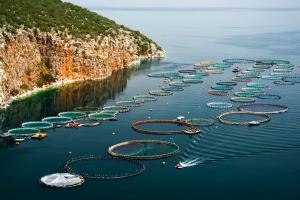Content:
Aquaculture is booming. Today, worldwide, we consume more farmed fish than wild-caught species. Think about it: How often do shoppers buy the more expensive wild-caught salmon over the farm-raised, and how often do they even get that choice?
This global trend is taking a toll on the wild fish populations that are harvested to feed farmed fish. A new study in Nature Sustainability shows that, by 2037, aquaculture demands could outstrip supply of so-called forage fish, or fish like anchovies and menhaden, which are often deemed too small for humans to eat. Although they’re rarely considered by most consumers, these species do feed the fish we eat (and livestock—pigs and poultry are large consumers of fish-based feeds), making them a vital link in marine ecosystems.
Despite the study’s dire conclusion, there is hope, say the authors. Feed reforms could allow for aquaculture’s continued growth as a source of critical protein on a hungry planet, while sustaining the forage species.
“Aquaculture is now the primary user of forage fish,” says lead author Halley Froehlich, a postdoctoral researcher at the University of California, Santa Barbara. “But we wanted to step back and look at other sectors in the food industry, like pigs and poultry, to get some perspective on how these fish are being used, and what are the actual tangible mitigating measures that could avoid surpassing supply.”


